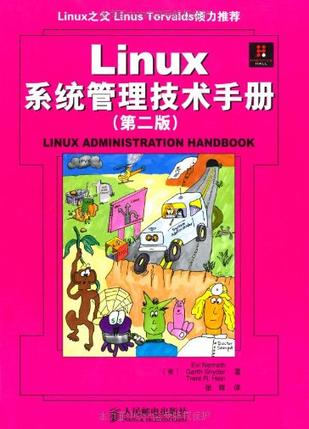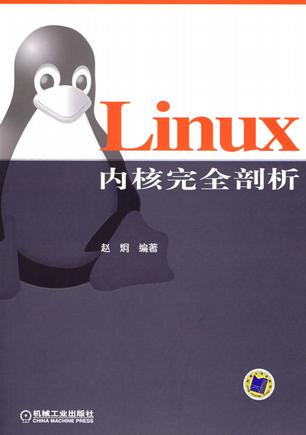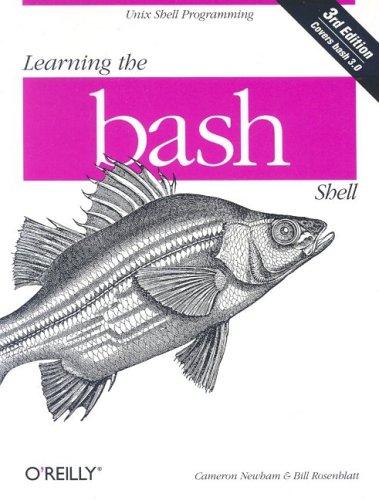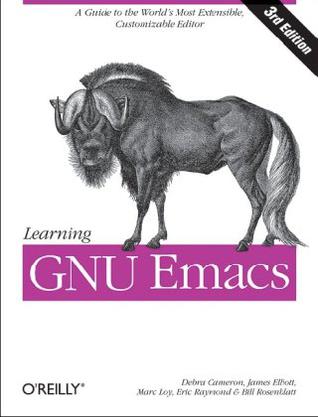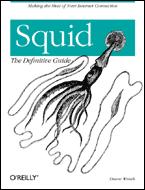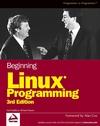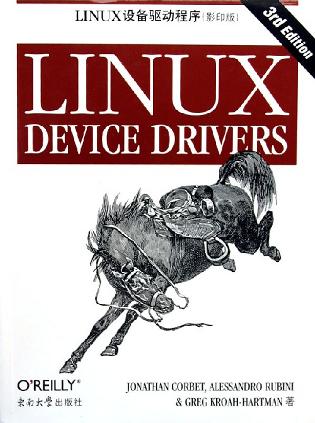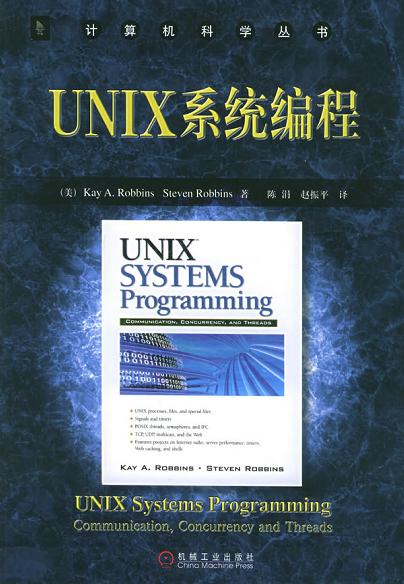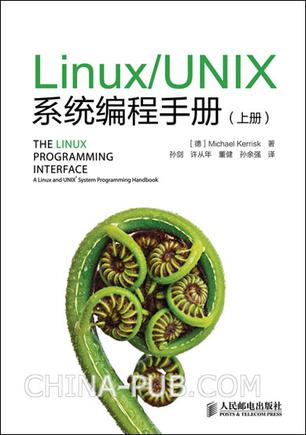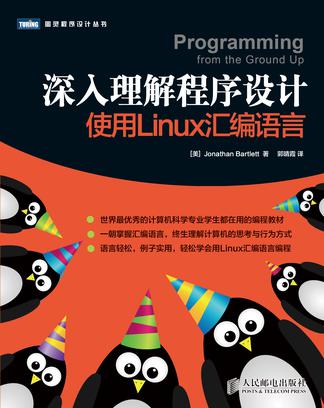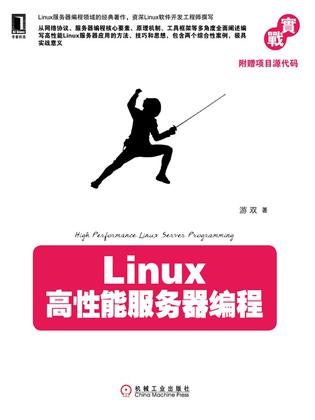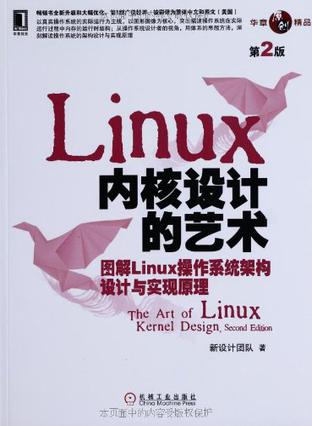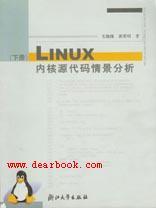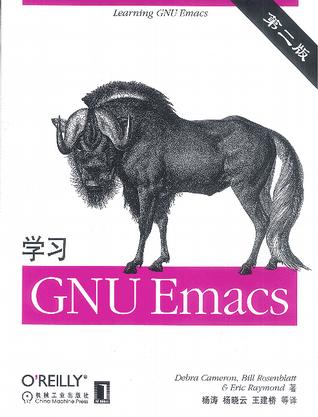欢迎来到相识电子书!
标签:linux
-
Linux系统管理技术手册
《Linux系统管理技术手册(第2版)》延续了《Linux系统管理技术手册(第2版)》前一版以及《uMx系统管理技术手册》的讲解风格,以当前主流的5种Linux发行版本(RedHatES、SUSE、Debian、FedoraCore和Ubuntu)为例,把Linux系统管理技术分为3个方面分别介绍。第1部分全面介绍了运行单机Linux系统涉及的各种管理知识和技术,如系统引导和关机、进程控制、文件系统管理、用户管理、设备管理、系统备份、软件配置以及cron和系统曰志的管理使用等。第2部分从详细讲解TCP/IP协议基本原理开始,深入讨论了网络的两大基本应用——域名系统和路由技术,然后逐章讲解Linux上的各种Internet关键应用,如电子邮件、NFS、文件共享、Web托管和Intemet服务,在这部分里还有专门的章节介绍网络硬件、网络管理与调试以及系统安全。第3部分包括了多种不容忽视的重要主题:X窗口系统、打印系统、系统维护与环境、性能分析、与Windows系统的协作、串行设备、操作系统驱动程序和内核、系统守护进程以及政策与行政管理方面的知识等。 -
Learning the vi and Vim Editors
There's nothing that hard-core Unix and Linux users are more fanatical about than their text editor. Editors are the subject of adoration and worship, or of scorn and ridicule, depending upon whether the topic of discussion is your editor or someone else's. vi has been the standard editor for close to 30 years. Popular on Unix and Linux, it has a growing following on Windows systems, too. Most experienced system administrators cite vi as their tool of choice. And since 1986, this book has been the guide for vi. However, Unix systems are not what they were 30 years ago, and neither is this book. While retaining all the valuable features of previous editions, the 7th edition of Learning the vi and vim Editors has been expanded to include detailed information on vim, the leading vi clone. vim is the default version of vi on most Linux systems and on Mac OS X, and is available for many other operating systems too. With this guide, you learn text editing basics and advanced tools for both editors, such as multi-window editing, how to write both interactive macros and scripts to extend the editor, and power tools for programmers -- all in the easy-to-follow style that has made this book a classic. Learning the vi and vim Editors includes: A complete introduction to text editing with vi: * How to move around vi in a hurry * Beyond the basics, such as using buffers *vi's global search and replacement * Advanced editing, including customizing vi and executing Unix commands How to make full use of vim: * Extended text objects and more powerful regular expressions * Multi-window editing and powerful vim scripts * How to make full use of the GUI version of vim, called gvim *vim's enhancements for programmers, such as syntax highlighting, folding and extended tags Coverage of three other popular vi clones -- nvi, elvis, and vile -- is also included. You'll find several valuable appendixes, including an alphabetical quick reference to both vi and ex mode commands for regular vi and for vim, plus an updated appendix on vi and the Internet. Learning either vi or vim is required knowledge if you use Linux or Unix, and in either case, reading this book is essential. After reading this book, the choice of editor will be obvious for you too. -
Linux系统管理技术手册(第二版)(英文版)
《Linux系统管理技术手册(第2版)(英文版)》(LAHv2)延续了该书第一版(LAH)以及《UNlX系统管理技术手册》(LISAFl)的讲解风格,以当前主流的5种Linux发行版本(Red Hat ES、SuSE、Debian、Fedora Core和Ubuntu)为例,把Linu×系统管理技术分为三个方面分别介绍。第一部分“基本管理技术”全面介绍了运行单机Linux系统涉及的各种管理知识和技术,如系统引导和关机、进程控制、文件系统管理、用户管理、设备管理、系统备份、软件配置以及cron和系统日志的管理使用等。第二部分“网络管理技术”从详细讲解TCP/IP协议基本原理开始,深入讨论了网络的两大基本应用——域名系统和路由技术,然后逐章讲解Linux上的各种Intemet关键应用,如电子邮件、NFS、文件共享、Web托管和Intemet服务,在这部分里还有专门的章节介绍网络硬件、网络管理与调试以及系统安全。第三部分“其他管理技术”包括了多种不容忽视的重要主题:X Wi rldow系统、打印系统、系统维护与环境、性能分析、与Wit‘idows系统的协作、串行设备、操作系统驱动程序和内核、系统守护进程以及政策与行政管理方面的知识等。《Linux系统管理技术手册(第2版)(英文版)》的几位作者是分别来自学术界、企业界以及职业培训领域的Li nLJx/LJNIx系统管理专家,这使得《Linux系统管理技术手册(第2版)(英文版)》从第1版开始,即成为全面、深入而且颇富实用性的Linux系统管理权威参考书。《Linux系统管理技术手册(第2版)(英文版)》适合于从Linux初学者到具有丰富经验的Linux专业技术人员使用。 -
Linux内核完全剖析
本书对早期Linux操作系统内核全部代友文件进行了详细的剖析,旨在让读者在尽量短的时间内对Linux的工作机理获得全面而深刻的理解,为进一步学习和研究Linux系统打下坚实的基础。虽然选择的版本较低,但该内核已能够正常编译运行,并且其中已包括了Linux工作原理的精髓。书中首先以Linux源代码版本的变迁为主线,简要介绍了Lin-ux系统的发展历史,同时着重说明了各个内核版本之间的主要区别和改进方面给出了选择0.11版内核源代码作为研究对象的原因。然后概要介绍了PC机的硬件组成结构、编制内核使用的汇编语言和C语言扩展部分,并且重点说明了80X86处理器在保护模下运行的编程方法。接着详细介绍了Linux内核源代码目录树组织结构,并依据该组织结构对所有内核程序和文件进行了注释和详细说明。为了加深读者的内核工作原理的理解,书中最后一章给出了围绕Linux 0.11系统的多个试验。试验中使用的相关程序均可从本书配套网站(www.oldinux.org)上下载。 -
汇编语言程序设计
《汇编语言程序设计》讲述每种高级语言程序在连接为可执行程序之前,都必须被编译为汇编语言程序,因此对于高级语言程序设计者来说,了解编译器如何生成汇编语言代码十分有用。 -
Learning the bash Shell
This refreshed edition serves as the most valuable guide yet to the bash shell. It's full of practical examples of shell commands and programs guaranteed to make everyday use of Linux that much easier. Includes information on key bindings, command line editing and processing, integrated programming features, signal handling, and much more! O'Reilly's bestselling book on Linux's bash shell is at it again. Now that Linux is an established player both as a server and on the desktop Learning the bash Shell has been updated and refreshed to account for all the latest changes. Indeed, this third edition serves as the most valuable guide yet to the bash shell. As any good programmer knows, the first thing users of the Linux operating system come face to face with is the shell the UNIX term for a user interface to the system. In other words, it's what lets you communicate with the computer via the keyboard and display. Mastering the bash shell might sound fairly simple but it isn't. In truth, there are many complexities that need careful explanation, which is just what Learning the bash Shell provides. If you are new to shell programming, the book provides an excellent introduction, covering everything from the most basic to the most advanced features. And if you've been writing shell scripts for years, it offers a great way to find out what the new shell offers. Learning the bash Shell is also full of practical examples of shell commands and programs that will make everyday use of Linux that much easier. With this book, programmers will learn: * How to install bash as your login shell * The basics of interactive shell use, including UNIX file and directory structures, standard I/O, and background jobs * Command line editing, history substitution, and key bindings * How to customize your shell environment without programming * The nuts and bolts of basic shell programming, flow control structures, command-line options and typed variables * Process handling, from job control to processes, coroutines and subshells * Debugging techniques, such as trace and verbose modes * Techniques for implementing system-wide shell customization and features related to system security -
Learning GNU Emacs Third Edition
The third edition of Learning GNU Emacs describes Emacs 21.3 from the ground up, including new user interface features such as an icon-based toolbar and an interactive interface to Emacs customization. A new chapter details how to install and run Emacs on Mac OS X, Windows, and Linux, including tips for using Emacs effectively on those platforms. GNU Emacs is the most popular and widespread of the Emacs family of editors. It is also the most powerful and flexible. Unlike all other text editors, GNU Emacs is a complete working environment--you can stay within Emacs all day without leaving. Learning GNU Emacs, 3rd Edition tells readers how to get started with the GNU Emacs editor. It is a thorough guide that will also "grow" with you: as you become more proficient, this book will help you learn how to use Emacs more effectively. It takes you from basic Emacs usage (simple text editing) to moderately complicated customization and programming. The third edition of Learning GNU Emacs describes Emacs 21.3 from the ground up, including new user interface features such as an icon-based toolbar and an interactive interface to Emacs customization. A new chapter details how to install and run Emacs on Mac OS X, Windows, and Linux, including tips for using Emacs effectively on those platforms. Learning GNU Emacs, third edition, covers: * How to edit files with Emacs * Using the operating system shell through Emacs * How to use multiple buffers, windows, and frames * Customizing Emacs interactively and through startup files * Writing macros to circumvent repetitious tasks * Emacs as a programming environment for Java, C++, and Perl, among others * Using Emacs as an integrated development environment (IDE) * Integrating Emacs with CVS, Subversion and other change control systems for projects with multiple developers * Writing HTML, XHTML, and XML with Emacs * The basics of Emacs Lisp The book is aimed at new Emacs users, whether or not they are programmers. Also useful for readers switching from other Emacs implementations to GNU Emacs. -
Squid: The Definitive Guide
Squid is the most popular Web caching software in use today, and it works on a variety of platforms including Linux, FreeBSD, and Windows. Squid improves network performance by reducing the amount of bandwidth used when surfing the Web. It makes web pages load faster and can even reduce the load on your web server. By caching and reusing popular web content, Squid allows you to get by with smaller network connections. It also protects the host on your internal network by acting as a firewall and proxying your internal web traffic. You can use Squid to collect statistics about the traffic on your network, prevent users from visiting inappropriate web sites at work or school, ensure that only authorized users can surf the Internet, and enhance your privacy by filtering sensitive information from web requests. Companies, schools, libraries, and organizations that use web-caching proxies can look forward to a multitude of benefits. Written by Duane Wessels, the creator of Squid, Squid: The Definitive Guide will help you configure and tune Squid for your particular situation. Newcomers to Squid will learn how to download, compile, and install code. Seasoned users of Squid will be interested in the later chapters, which tackle advanced topics such as high-performance storage options, rewriting requests, HTTP server acceleration, monitoring, debugging, and troubleshooting Squid. Topics covered include: Compiling and installing Squid Running Squid Using Squid's sophisticated access controls Tuning disk storage for optimal performance Configuring your operating system for HTTP interception Forwarding Requests to other web caches Using redirectors to rewrite user requests Monitoring Squid with the cache manager and SNMP Using Squid to accelerate and protect HTTP servers Managing bandwidth consumption with Delay Pools -
Beginning Linux Programming 3rd Edition
What is this book about? If you have some programming experience and are ready to venture into Linux programming, this updated edition of the bestselling entry-level book takes you there. The authors guide you step by step, using construction of a CD database application to give you hands-on experience as you progress from the basic to the complex. You’ll start with fundamental concepts like writing Unix programs in C. You’ll learn basic system calls, file I/O, interprocess communication, and shell programming. You’ll become skilled with the toolkits and libraries for working with user interfaces. The book starts from the basics, explaining how to compile and run your first program. New to this edition are chapters on MySQL® access and administration; programming GNOME and KDE; and Linux standards for portable applications. Coverage of kernel programming, device drivers, CVS, grep, and GUI development environments has expanded. This book gives you practical knowledge for real wor ld application. What does this book cover? In this book, you will learn how to * Develop programs to access files and the Linux environment * Use the GNU compiler, debugger and other development tools * Program data storage aapplications for MySQL and DBM database systems * Write programs that take advantage of signals, processes and threads * Build graphical user interfaces using both the GTK (for GNOME) and Qt (for KDE) libraries * Write device drivers that can be loaded into the Linux kernel * Access the network using TCP/IP sockets * Write scripts that use grep, regular expressions and other Linux facilities Who is this book for? This book is for programmers with some C or C++ experience, who want to take advantage of the Linux development environment. You should have enough Linux familiarity to have installed and configured users on Linux. -
LINUX设备驱动程序
本书揭示了如何给大多数的设备编写驱动程序的信息,这些信息迄今仅通过口头或者隐晦的源代码注释被共享。你不必是一个内核高手就可以理解并享受本书,所需要的只是C以及Unix系统调用方面的背景知识。在不需要特殊的硬件设备就能编译和运行的详细示例的指引下,你将学会如何给字符设备、块设备和网络接口编写驱动程序。PCI、USB和tty(终端)子系统都单列一章。本书为那些对操作系统的工作机制好奇的人提供了地址空间、异步事件和I/O等方面的阐述。 -
UNIX系统编程
本书深入阐述了能使UNIX操作系统发挥出量大功效的软件设计方法,对UNIX编程的精髓进行了清晰易懂的介绍。两位作者具有多年教学与科研经验,匠心独运,精耕细做,以一些用来说明如何使用系统调用的短小代码段开始,巧妙地过渡到实际项目中,逐渐在拓展了读者的技术水平。本书对通信、并发和多线程问题进行了透彻的研究;对复杂的概念,比如信号和并发,进行了全面、明晰的解释,并以此闻名。本书的特色还在于它提供了大量实例、练习、可重用的代码以及有和于网络通信程序的简化了的库。 本书同时也是一本基于最新的UNIX标准的完备的参考书,它完全覆盖了与文件、信号、信号量、POSIX线程和客户机-服务器通信相关的内容。此外,本版本中新增拉在于Web、UDP和服务器性能的章节也为本书增色不少。书中包含大量有趣的项目设计及其参考答案,例如命令解释程序、WWW重定向、因特网音频广播、服务器性能等,这些项目设计稍加完善就可以成为可用的程序,可供软件开发人员参考。 本书的Web站点http://usp.cs,utsa,edu/usp为读者提供了大量的资料,内容包括所有可下载的程序,这些程序可以免费使用。此外,这个站点中还包含到模拟器、测试工具、作者准备的课程资料以及勘误表的链接。 本书是UNIX系统编程的经典教材,并基于最新的UNIX标准进行了更新,其内容完全覆盖文件、信号、POSIX线程、UDP、Web和客户机-服务器等相关内容,并对通信、并发和多线程问题进行了透彻的研究,对复杂的概念进行了全面、完善以及明晰的解释,并以此而闻名。本书不仅提供了大量实例和练习,还专门设计了有针对性的项目,并给出了参考答案,帮助读者理解相关的概念,增强应用能力。本书适合作为高等院校计算机专业教材,也可供软件开发人员参考。 -
Linux/UNIX系统编程手册
《linux/unix系统编程手册(上、下册)》是介绍linux与unix编程接口的权威著作。linux编程资深专家michael kerrisk在书中详细描述了linux/unix系统编程所涉及的系统调用和库函数,并辅之以全面而清晰的代码示例。《linux/unix系统编程手册(上、下册)》涵盖了逾500个系统调用及库函数,并给出逾200个程序示例,另含88张表格和115幅示意图。 《linux/unix系统编程手册(上、下册)》总共分为64章,主要讲解了高效读写文件,对信号、时钟和定时器的运用,创建进程、执行程序,编写安全的应用程序,运用posix线程技术编写多线程程序,创建和使用共享库,运用管道、消息队列、共享内存和信号量技术来进行进程间通信,以及运用套接字api编写网络应用等内容。 《linux/unix系统编程手册(上、下册)》在汇聚大批 linux专有特性(epoll、inotify、/proc)的同时,还特意强化了对unix标准(posix、sus)的论述,彻底达到了“鱼与熊掌,二者得兼”的效果,这也堪称本书的最大亮点。 《linux/unix系统编程手册(上、下册)》布局合理,论述清晰,说理透彻,尤其是作者对示例代码的构思巧妙,独具匠心,仔细研读定会受益良多。本书适合从事linux/unix系统开发、运维工作的技术人员阅读,同时也可作为高校计算机专业学生的参考研习资料。 -
深入理解程序设计
是否真正理解汇编语言,常常是普通程序员和优秀程序员的分水岭。《深入理解程序设计:使用Linux汇编语言》介绍了Linux平台下的汇编语言编程,教你从计算机的角度看问题,从而了解汇编语言及计算机的工作方式,为成就自己的优秀程序员之梦夯实基础。 很多人都认为汇编语言晦涩难懂,但New Medio技术总监Jonathan Bartlett的这本书将改变人们的看法。本书首先介绍计算机的体系结构,然后从编写简单程序开始,一步一步扩充函数、文件、读写处理等知识,并平滑过渡到程序共享、存储与优化,由浅入深地介绍了Linux汇编语言编程。作者不仅会带你了解向计算机传递信息的方式方法,还让你学会向修改和使用程序的人传递信息,并最终用自己的规则构建“世界”,按自己对问题的理解和解决方案创造“世界”。 主要内容: 计算机体系结构(详解内存及寻址方式); 编程初体验; 函数使用及复杂度处理; 文件处理及缓冲区分析; 记录读写及修改; 通过测试及错误处理打造健壮程序; 程序共享; 内存布局及处理; 计算机的计数原理; 程序优化(时机、位置及方式)。 -
Linux高性能服务器编程
本书是Linux服务器编程领域的经典著作,由资深Linux软件开发工程师撰写,从网络协议、服务器编程核心要素、原理机制、工具框架等多角度全面阐释了编写高性能Linux服务器应用的方法、技巧和思想。不仅理论全面、深入,抓住了重点和难点,还包含两个综合性案例,极具实战意义。 全书共17章,分为3个部分:第一部分对Linux服务器编程的核心基础——TCP/IP协议进行了深入的解读和阐述,包括TCP/IP协议族、TCP/IP协议,以及一个经典的TCP/IP通信案例;第二部分对高性能服务器编程的核心要素进行了全面深入的剖析,包含Linux网络编程API、高级I/O函数、Linux服务器程序规范、高性能服务器程序框架、I/O复用、信号、定时器、高性能I/O框架库Libevent、多进程编程、多线程编程、进程池和线程池等内容,原理、技术与方法并重;第三部分从侧重实战的角度讲解了高性能服务器的优化与监测,包含服务器的调制、调试和测试,以及各种实用系统监测工具的使用等内容。 -
Linux高性能服务器编程
本书是Linux服务器编程领域的经典著作,由资深Linux软件开发工程师撰写,从网络协议、服务器编程核心要素、原理机制、工具框架等多角度全面阐释了编写高性能Linux服务器应用的方法、技巧和思想。不仅理论全面、深入,抓住了重点和难点,还包含两个综合性案例,极具实战意义。 全书共17章,分为3个部分:第一部分对Linux服务器编程的核心基础——TCP/IP协议进行了深入的解读和阐述,包括TCP/IP协议族、TCP/IP协议,以及一个经典的TCP/IP通信案例;第二部分对高性能服务器编程的核心要素进行了全面深入的剖析,包含Linux网络编程API、高级I/O函数、Linux服务器程序规范、高性能服务器程序框架、I/O复用、信号、定时器、高性能I/O框架库Libevent、多进程编程、多线程编程、进程池和线程池等内容,原理、技术与方法并重;第三部分从侧重实战的角度讲解了高性能服务器的优化与监测,包含服务器的调制、调试和测试,以及各种实用系统监测工具的使用等内容。 -
Linux 内核设计的艺术(第2版)
本书的第1版广获好评,版权被中国台湾和美国两家大型出版社引进,第2版根据读者的反馈和作者对操作系统的最新研究成果对第1版进行了大幅优化和重写,使其内容质量更上一层楼。本书在众多关于Linux内核的书中独树一帜,它在世界范围内首次提出并阐述了操作系统设计的核心指导思想主奴机制,这是所有操作系统研究者的一笔宝贵财富。它也是一本能真正引导我们较为容易地、极为透彻地理解Linux内核的经典之作,也可能是当前唯一能从本质上指引我们去设计和开发拥有自主知识产权的操作系统的著作。 本书的最大特点是它的写作方式和内容组织方式与同类书完全不同。它在深刻地分析了传统讲解方法的利弊之后,破旧立新,从认知学的角度开创了一种全新的方式。以操作系统的真实运行过程为主线,结合真实的内核源代码、300余幅精确的内核运行时序图和具有点睛之妙的文字说明,对操作系统从开机加电到系统完全准备就绪,及运行用户程序的整个过程进行了系统而完整地分析,深刻地揭示了其间每一个动作的设计意图和实现原理,完美地再现了操作系统设计者的设计思路。阅读本书就如同跟随着操作系统设计者一起去思考,我们会在阅读的过程中发现Linux内核设计的精妙,会发现原来处处都“暗藏玄机”,哪怕是一行很短的代码。 本书在所有细节上都力求完美。为了保证知识的准确性,操作系统运行过程中的每个动作都经过了严格的考证;为了让我们真正理解Linux内核的原理,它突破传统,以Linux的真实运行过程为主线进行讲解;为了做到真正易于理解,创新性地使用了图解的方式,精心绘制了300余幅分辨率600dpi的时序图,图中表现的运行时结构和状态与操作系统实际运行时的真实状态完全吻合;为了提高阅读体验,本书采用了双色印刷,以便于我们更清楚地观察每一幅图中的细节。 -
Linux 内核设计的艺术(第2版)
本书的第1版广获好评,版权被中国台湾和美国两家大型出版社引进,第2版根据读者的反馈和作者对操作系统的最新研究成果对第1版进行了大幅优化和重写,使其内容质量更上一层楼。本书在众多关于Linux内核的书中独树一帜,它在世界范围内首次提出并阐述了操作系统设计的核心指导思想主奴机制,这是所有操作系统研究者的一笔宝贵财富。它也是一本能真正引导我们较为容易地、极为透彻地理解Linux内核的经典之作,也可能是当前唯一能从本质上指引我们去设计和开发拥有自主知识产权的操作系统的著作。 本书的最大特点是它的写作方式和内容组织方式与同类书完全不同。它在深刻地分析了传统讲解方法的利弊之后,破旧立新,从认知学的角度开创了一种全新的方式。以操作系统的真实运行过程为主线,结合真实的内核源代码、300余幅精确的内核运行时序图和具有点睛之妙的文字说明,对操作系统从开机加电到系统完全准备就绪,及运行用户程序的整个过程进行了系统而完整地分析,深刻地揭示了其间每一个动作的设计意图和实现原理,完美地再现了操作系统设计者的设计思路。阅读本书就如同跟随着操作系统设计者一起去思考,我们会在阅读的过程中发现Linux内核设计的精妙,会发现原来处处都“暗藏玄机”,哪怕是一行很短的代码。 本书在所有细节上都力求完美。为了保证知识的准确性,操作系统运行过程中的每个动作都经过了严格的考证;为了让我们真正理解Linux内核的原理,它突破传统,以Linux的真实运行过程为主线进行讲解;为了做到真正易于理解,创新性地使用了图解的方式,精心绘制了300余幅分辨率600dpi的时序图,图中表现的运行时结构和状态与操作系统实际运行时的真实状态完全吻合;为了提高阅读体验,本书采用了双色印刷,以便于我们更清楚地观察每一幅图中的细节。 -
Linux内核源代码情景分析(下册)
下册的内容包括设备驱动、多处理器SMP系统结构以及系统引导和初始化四章。 -
Linux内核源代码情景分析(下册)
下册的内容包括设备驱动、多处理器SMP系统结构以及系统引导和初始化四章。 -
学习GNU Emacs
学习GNU Emacs GNU Emacs是Emacs编辑器家族中最受欢迎、传播范围最广、也是最强大和最灵活的UNIX文本编辑器。与其他文本编辑器的重要区别在于它是一个完备的工作环境,使用Emacs可以完成各种日常工作。本书循序渐进地讲述Emacs的入门知识,随着本书的深入,读者的Emacs使用水平将从初级(只会进行简单的文字编辑)提高到足以完成相当复杂的定制和程序设计任务的阶段。 本书对Emac
热门标签
下载排行榜
- 1 梦的解析:最佳译本
- 2 李鸿章全传
- 3 淡定的智慧
- 4 心理操控术
- 5 哈佛口才课
- 6 俗世奇人
- 7 日瓦戈医生
- 8 笑死你的逻辑学
- 9 历史老师没教过的历史
- 10 1分钟和陌生人成为朋友

